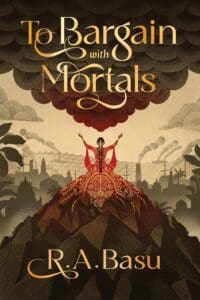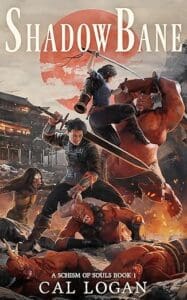Rating: ★★★★★
Time for a review of a classic!
The Picture of Dorian Gray, for me, is a timeless work of horror that delves into what makes us human, and explores our conceptions of good and evil, and whether there are such things at all.
“Life is a question of nerves, and fibres, and slowly built-up cells in which thought hides itself and passion has its dreams. You may fancy yourself safe and think yourself strong. But a chance tone of colour in a room or a morning sky, a particular perfume that you had once loved and that brings subtle memories with it, a line from a forgotten poem that you had come across again, a cadence from a piece of music that you had ceased to play… I tell you, that it is on things like these that our lives depend.”
Synopsis
In the London upper class, there is little to do but commit scandal and gossip about it. The Picture of Dorian Gray opens with three characters participating in a painting session: Basil Hallward the stodgy painter, Dorian Gray the young and perfect model, and Lord Henry the socialite cad. Ever the hedonist and the worshipper of youth and beauty, Lord Henry comments on Dorian, lauding his physical beauty and his outstanding status as an elite among the elite – a veritable god among men. Basil demures, mostly because he has feelings for Dorian, but Dorian takes to heart Lord Henry’s praise; perhaps he IS someone to be revered.
When Basil finishes the painting, Dorian is so awestruck by his own beauty in the painting that he makes a wish aloud:
“How sad it is! I shall grow old and horrible and dreadful. But this picture will remain always young. It will never be older than this particular day of June. If it were only the other way! If it were I who was to be always young, and the picture that was to grow old! For that I would give everything! Yes, there is nothing in the whole world I would not give! I would give my soul for that!”
Basil gives Dorian the portrait as a gift, stating that it is his life’s work. Dorian gladly accepts. As the summer winds on and the lives of the societal elite grow ever more scandalous, Dorian begins spending more and more time with Lord Henry who encourages Dorian to indulge in his desires at whatever the cost. “The only way to get rid of a temptation is to yield to it,” Lord Henry says, and before long Dorian takes his first steps down the spiraling staircase of wanton disregard for others.
Dorian is beautiful on the surface. But when he looks at his painting, it is not beauty that he sees, but his vile innermost self.
Review
The Picture of Dorian Gray explores the indulgences of cruelty, indifference, vanity, and selfishness that, to some extent, lies within each of us. Should we give into the impulses that live within us, or strive to be something better both for our own sake and for the well-being of others?
For me, The Picture of Dorian Gray is absolutely terrific horror. The most interesting monsters are those inside ourselves, and Dorian’s secret monster is as horrible as any other. More importantly, one of my favorite things about horror is the emotion that drives the unspeakable act. In gothic horror, most vampires are symbols for hidden lust, werewolves typically representing repressed anger or sadness. Zombies represent a fear of loss of identity or agency. To me, Dorian Gray is a representation of selfishness and what happens when we indulge our darkest desires.
If you like horror and insightful writing, The Picture of Dorian Gray is a great story that, much like Dorian, hasn’t aged a day.





I totally agree, 5 stars. And how timesless, my mother liked the story when she was in college, and she’s in her 80s now! I liked the old movie adaptation, too, with Angela Lansbury.
Oops, “timeless.”
That’s a great story about your mom! Yeah the book really does hold up, considering it was written about 120 years ago. I haven’t seen the adaptation but I’d like to.
Nice to see my favourite author still getting positive reviews after all these years. All his work is timeless.